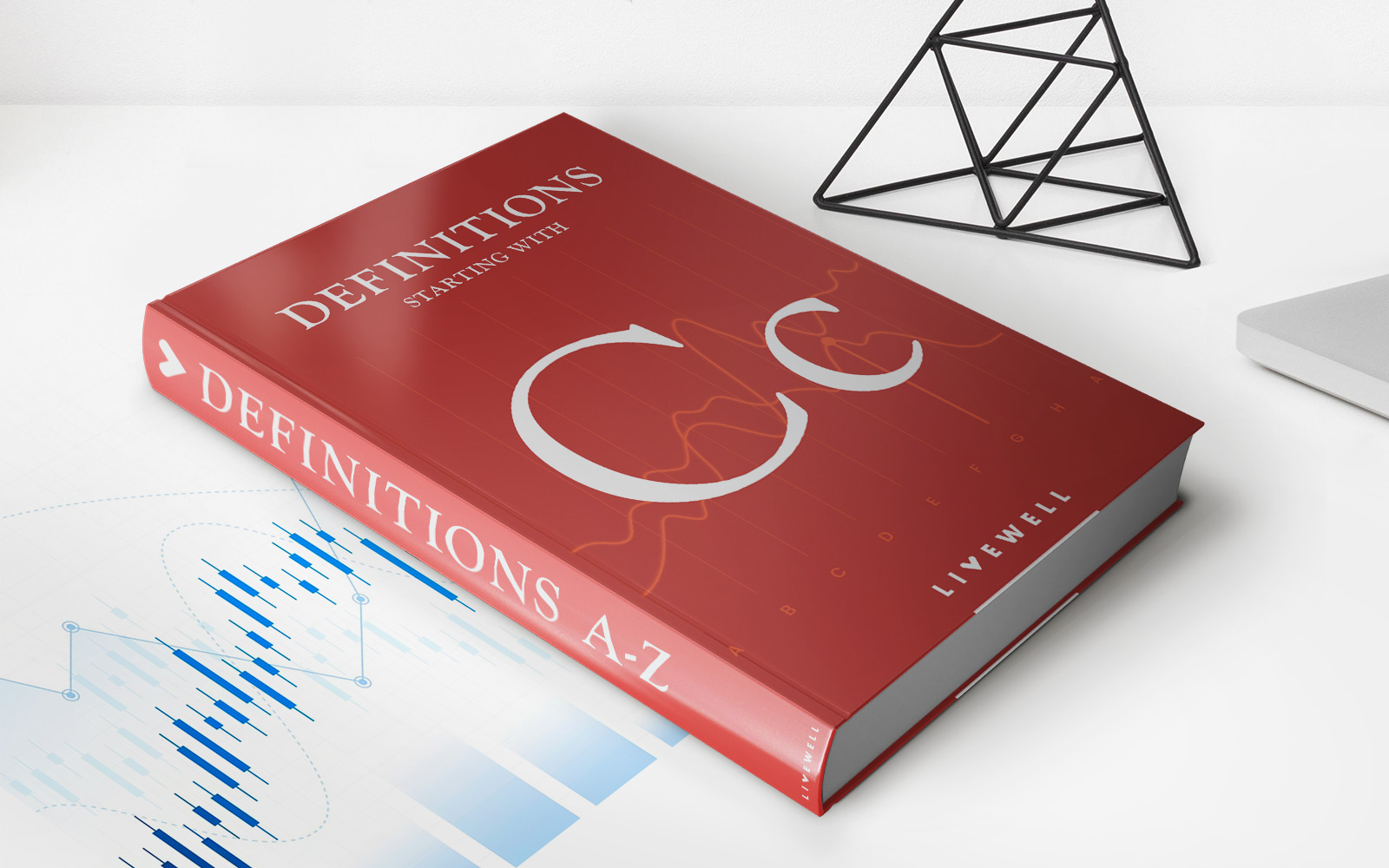Home>Finance>How Much Does A Loan Affect Your Credit Utilization?


Finance
How Much Does A Loan Affect Your Credit Utilization?
Modified: May 20, 2024
Learn how loans impact your credit utilization and overall financial health. Understand the effects of finance management on your credit score.
(Many of the links in this article redirect to a specific reviewed product. Your purchase of these products through affiliate links helps to generate commission for LiveWell, at no extra cost. Learn more)
Table of Contents
Introduction
Managing your finances wisely is crucial for a healthy credit score. One of the key factors that influence your credit score is credit utilization. This term refers to the ratio of your credit card balances to your credit limits. Essentially, it indicates how much of your available credit you are using. A high credit utilization ratio can negatively impact your credit score, while a low ratio can have a positive effect.
When you take out a loan, it can significantly impact your credit utilization. Understanding the intricacies of this relationship is essential for making informed financial decisions and maintaining a strong credit profile. In this article, we will delve into the connection between loans and credit utilization, explore installment loans for flexible repayment options, and provide valuable tips for managing credit utilization when you have a loan.
By gaining insight into the interplay between loans and credit utilization, you can proactively strategize to minimize any potential negative impact on your credit score while leveraging loans to achieve your financial goals. Let’s embark on this enlightening journey to unravel the impact of loans on credit utilization and equip ourselves with the knowledge needed to make sound financial choices.
What is Credit Utilization?
Credit utilization, often referred to as the credit utilization ratio, is a fundamental component of your overall credit health. It is calculated by dividing the total amount of credit you are currently using by the total amount of credit available to you, expressed as a percentage. For example, if you have a credit card with a $5,000 limit and a balance of $1,000, your credit utilization ratio for that card is 20%.
Lenders and credit scoring models use this ratio to assess how responsibly you manage your credit. A lower credit utilization ratio is generally seen as positive, as it suggests that you are not overly reliant on credit and are using it in a controlled manner. On the other hand, a high credit utilization ratio can signal financial distress and may lead to a lower credit score.
It’s important to note that credit utilization is not only evaluated on an individual account basis but also across all your revolving credit accounts, such as credit cards and lines of credit. Therefore, the combined credit utilization across all your accounts is a significant factor in determining your overall creditworthiness.
By understanding the concept of credit utilization and its impact on your credit score, you can take proactive steps to manage it effectively. This includes being mindful of your spending and repayment patterns to maintain a healthy credit utilization ratio, which in turn can contribute to a stronger credit profile and better borrowing opportunities.
How Does a Loan Impact Credit Utilization?
When you take out a loan, such as a personal loan or an auto loan, the impact on your credit utilization depends on the type of loan and how it is structured. Unlike revolving credit accounts like credit cards, loans are considered installment accounts, meaning they involve borrowing a fixed amount of money and repaying it in regular installments over a predetermined period.
Initially, when you are approved for a loan, it may cause a temporary increase in your overall credit utilization ratio. This is because the loan amount is added to your total debt, potentially raising the percentage of credit you are currently using. However, as you make regular payments on the loan, thereby reducing the outstanding balance, your credit utilization is gradually improved.
It’s important to note that the impact of a loan on credit utilization is more nuanced than that of a credit card. With credit cards, your utilization can fluctuate significantly based on your spending and payment behavior each month. In contrast, a loan’s impact on credit utilization is more stable and predictable, as the monthly payments are typically fixed, and the overall balance decreases over time.
Furthermore, the positive influence of responsibly managing a loan can outweigh the initial impact on credit utilization. Making timely payments and ultimately paying off the loan as agreed demonstrates financial discipline and reliability, which are favorable attributes in the eyes of creditors and credit scoring models.
Understanding how a loan affects your credit utilization empowers you to make informed decisions about borrowing and managing your existing credit accounts. By being mindful of the interplay between loans and credit utilization, you can navigate your financial journey with confidence and work towards optimizing your credit profile.
Types of Loans and Their Impact on Credit Utilization
Various types of loans can have differing effects on your credit utilization, depending on their specific characteristics and how you manage them. Let’s explore the impact of common loan types on credit utilization:
- Personal Loans: When you take out a personal loan, the initial impact on your credit utilization may be a temporary increase, as the loan amount adds to your total debt. However, as you make regular payments, the outstanding balance decreases, leading to an improvement in your credit utilization over time.
- Auto Loans: Similar to personal loans, an auto loan can initially raise your credit utilization ratio. As you make consistent payments, the decreasing loan balance contributes to a positive trend in your credit utilization, ultimately benefiting your credit score.
- Student Loans: Student loans, whether federal or private, typically involve long repayment periods. While they may initially impact your credit utilization, managing these loans responsibly by making on-time payments can demonstrate financial responsibility and contribute to a favorable credit profile.
- Mortgages: A mortgage is a significant installment loan that can have a substantial impact on your credit utilization, especially in the initial stages. As you steadily pay down your mortgage, the decreasing balance can positively influence your credit utilization over time.
It’s important to note that while these loans can initially elevate your credit utilization, their long-term impact is characterized by the positive trend resulting from consistent payments and reducing balances. Additionally, the mix of installment and revolving credit accounts in your overall credit profile also plays a role in shaping your creditworthiness.
By understanding the impact of different loan types on credit utilization, you can approach your borrowing and repayment strategies with a clear understanding of how they influence your credit score. This knowledge empowers you to make informed financial decisions and cultivate a healthy credit profile over time.
Tips for Managing Credit Utilization with a Loan
Effectively managing your credit utilization, especially in conjunction with a loan, is essential for maintaining a strong credit profile. Here are valuable tips to help you navigate this aspect of your financial health:
- Monitor Your Credit Utilization: Keep a close eye on your credit utilization ratio, considering both revolving credit accounts and the impact of any outstanding loans. Regular monitoring allows you to identify any concerning trends and take proactive measures to address them.
- Strategically Use Revolving Credit: If possible, aim to keep your credit card balances low relative to your credit limits. This can help offset the impact of installment loans on your overall credit utilization and demonstrate responsible credit management.
- Make Timely Payments: Whether it’s a loan installment or a credit card bill, prioritize making timely payments. Consistent on-time payments not only contribute to a positive payment history but also aid in gradually reducing your outstanding balances, thereby improving your credit utilization over time.
- Consider Loan Refinancing: Depending on your financial situation and credit standing, exploring the option of refinancing a loan to secure more favorable terms, such as a lower interest rate or extended repayment period, can help alleviate the impact of the loan on your credit utilization.
- Balance Your Credit Mix: Strive to maintain a healthy mix of installment and revolving credit, as this can positively influence your credit score. By responsibly managing both types of credit, you demonstrate diverse and effective credit management skills.
- Plan for Large Purchases: If you anticipate significant expenses that may require taking on additional debt, consider the potential impact on your credit utilization. Planning ahead allows you to make informed decisions about when and how to proceed with such purchases while managing your credit effectively.
Implementing these tips and discovering how to pay off debt faster, even on a tight budget, empowers you to proactively manage your credit utilization and effectively handle your loans. By staying vigilant, making informed financial choices, and maintaining disciplined credit management practices, you can mitigate the impact of loans on your credit utilization and work towards a resilient credit profile.
Conclusion
Understanding the intricate relationship between loans and credit utilization is pivotal for anyone seeking to maintain a healthy credit profile while effectively managing their borrowing. The impact of a loan on credit utilization, whether initially elevating it or gradually improving it, underscores the dynamic nature of credit management and the importance of informed financial decision-making.
By comprehending the nuances of credit utilization and its interaction with various types of loans, individuals can proactively strategize to minimize any potential negative impact on their credit scores. Consistently making timely payments, monitoring credit utilization ratios, and balancing the mix of installment and revolving credit are essential components of a comprehensive approach to credit management.
Furthermore, the responsible management of loans, characterized by disciplined repayment and a proactive stance towards credit utilization, can contribute to a positive credit history and enhance one’s overall creditworthiness. This, in turn, opens doors to better borrowing opportunities and more favorable terms in the future.
As individuals navigate their financial journeys, the symbiotic interplay between loans and credit utilization serves as a reminder of the need for prudence, foresight, and a deep understanding of one’s financial landscape. By implementing the tips outlined in this article and approaching credit management with diligence and knowledge, individuals can effectively harness the potential of loans while safeguarding their credit health.
Ultimately, the journey towards mastering credit utilization in the context of loans is a continuous process, requiring adaptability and a proactive mindset. Armed with the insights gleaned from this exploration, individuals can confidently navigate the intersection of loans and credit utilization, steering their financial destinies towards stability, resilience, and enduring credit strength.














